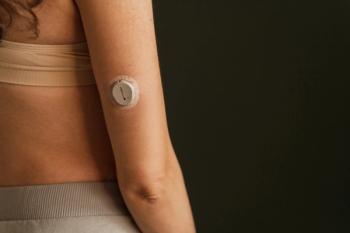
- May 2021
- Volume 89
- Issue 05
Inhaler Techniques Can Become Sloppy Over Time
Pharmacists should counsel patients periodically to ensure correct usage for better disease and treatment management.
An Egyptian papyrus scroll dating as far back as 1544 BC shows the first record of delivery of an herbal smoke concoction through a rudimentary inhalation device.1
Inhalers are a cornerstone therapy for acute and chronic lung illnesses and diseases.2 Adherence to therapy controls symptoms of asthma and chronic obstructive pulmonary disease (COPD) and improves overall outcomes.3 Investigators worldwide continue to innovate inhaler design. As design intricacies transform inhalers, instruction is imperative to ensure that patients receive proper dosing.
ADHERENCE IS A PROBLEM
Therapeutic aerosols are remarkably bioavailable, providing local and systemic benefits.4 Patients generally need maintenance and rescue inhalers but often cannot recall when to use each and can become nonadherent. A systematic literature review reports that within a lung-diseased US population sample, 4 of 5 patients used their inhalers incorrectly.5 The following nonadherence factors for asthma and COPD treatment contribute to preventable complications and hospital stays: incorrect technique, intentional disease denial or treatment refusal, polypharmacy, and unintentional forgetfulness.3
Unless patients have experience handling inhalers, they will require instruction specific to the device. They often need counseling later to correct bad habits. Table 1 shows common pressured metered-dose inhalers (pMDIs) and dry powder inhalers (DPIs), which employ distinct aerosol mechanisms.
For pMDIs, patients must remove the inhaler's cap and gently shake the device vertically to ensure that the drug and propellant mix well.6 They must prime inhalers according to instructions. Patients should exhale fully before placing the canister to the mouth,6 and they must coordinate inhalation with firing the canister.7 Instruct the patient to inhale deeply and slowly while pressing down on the device for 1 puff.7 Lifting the chin to keep the inhaler upright and forming a seal with lips around the actuator promotes stability and better technique.6 After administering the dose, patients should hold their breath for 10 seconds while the drug fully disperses and deposits in the lungs.7 It is best to wait 1 minute before inhaling the second puff if adverse effects, such as dizziness, occur.7
Thrush is a possible adverse effect from corticosteroid inhalers.8 Patients should rinse their mouths with water after administration and spit out any drug remaining in the mouth.9 Aerochamber spacers—long, hollow tubes with optional masks enabling direct lung deposition regardless of breath and hand coordination—often prevent thrush.10 Drug particles congregate at the site of action ratehr than upper pharyngeal locations, lessening the chance of Candida growth.11
Patients may claim an inhaler is defective when it simply needs to be unclogged. Frequent use of aerochamber spacers and pMDIs necessitate cleaning clogged actuators or tubes.6 Patients can find specific cleaning instructions in each inhaler's information pamphlet, but pharmacy staff members should show patients the pamphlet repeatedly. Common rescue inhalers' labeling recommends cleaning once weekly with warm water and air drying.
DPIs require no hand-breath coordination.12 They are breath-actuated and depend upon the patient's force of inhalation.13 Administration directions reflect the inhaler's design. Counsel patients according to the manufacturer's instructions, and a good tip is to pull out the directions and follow them along with patients. For most DPI inhalers, patients must hold the device flat without shaking, which might dislodge the medication, for the entire time they handle the inhaler.6
Instruct patients to release the mouthpiece and powder according to the manufacturer's directions.6 Select DPIs will click following the release of the powder in the inhaler.6 Patients should thoroughly exhale away from the device before placing the mouthpiece to the lips.6 Counsel patients to inhale deeply and quickly and hold their breath for 10 seconds before exhaling.6 Patients find these inhalers easier to use, and because they are single-dose powder dispersions, cleaning is not necessary.13
Table 214 describes barriers to each respective type of inhaler. Prescribers and pharmacists must consider all patient factors to determine which inhaler is best.
Most inhalers from the same manufacturer work similarly. Also, counting devices indicate when the inhaler is almost empty and prompts patients to order their medications proactively.6 Show patients where the counter is located, and counsel them to watch for color changes in the dose counter's number.
CONCLUSION
Patients may have questions when filling inhaler prescriptions for the first time. They may also forget over time how to use inhalers, and poor technique leads to recurring disease symptoms. Counseling for correct inhaler usage helps promote better disease and treatment management.
REFERENCES
1. Stein SW, Thiel CG. The history of therapeutic aerosols: a chronological review. J Aerosol Med Pulm Drug Deliv. 2017;30(1):20-41. doi:10.1089/jamp.2016.1297
2. Murphy A. How to help patients optimise their inhaler technique. Pharm J. 2016;297(7891). doi:10.1211/PJ.2016.20201442
3. George M, Bender B. New insights to improve treatment adherence in asthma and COPD. Patient Prefer Adherence. 2019;13:1325-1334. doi:10.2147/PPA.S209532
4. Laube BL. The expanding role of aerosols in systemic drug delivery, gene therapy and vaccination: an update. Transl Respi Med. 2014;2:3. doi:10.1186/2213-0802-2-3
5. Cho-Reyes S, Celli BR, Dembek C, Yeh K, Navaie M. Inhalation technique errors with metered-dose inhalers among patients with obstructive lung diseases: a systematic review and meta-analysis of US studies. Chronic Obstr Pulm Dis. 2019;6(3):267-280. doi:10.15326/jcopdf.6.3.2018.0168
6. Inhaler technique for people with asthma or COPD. National Asthma Council Australia. 2016. Accessed April 9, 2021. https://extranet.who.int/ncdccs/Data/AUS_D1_Inhaler_Technique-Infopaper-FULL-UPDATED-11-1.pdf
7. Newman SP, Clarke SW. The proper use of metered dose inhalers. Chest. 1984;86(3):343-344. doi:10.1378/chest.86.3.342
8. Fukushima C, Matsuse H, Tomari S, et al. Oral candidiasis associated with inhaler corticosteroid use: comparison of fluticasone and beclomethasone. Ann Allergy Asthma Immunol. 2003;90(6):646-651. doi:10.1016/S1081-1206(10)61870-4
9. Symbicort side effects. Symbicort. Updated October 2020. Accessed April 9, 2021. https:www/mysymbicort.com/asthma/side-effects.html
10. Spacers. Asthma UK. Updated August 2019. Accessed April 9, 2021. https://www.asthma.org/uk/advice/inhalers-medicines-treatments/inhalers-and-spacers/spacers/
11. Ming SWY, Haughney J, Ryan D, et al. Comparison of adverse events associated with different spacers used with non-extrafine beclometasone dipropionate for asthma. NPJ Prim Care Respir Med. 2019;29(1):3. doi:10.1038/s41533-019-0115-0
12. How to use a dry powder inhaler (DPI). Allergy & Asthma Network. Accessed April 9, 2021. https://allergyasthmanetwork.org/what-is-asthma/how-is-asthma-treated/how-to-use-a-dry-powder-inhaler/
13. Melani AS. Inhalatory therapy training: a priority challenge for the physician. Acta Biomed. 2007;78(3):233-245.
14. Aerosol delivery guides. American Association for Respiratory Care. Accessed April 11, 2021. https://www.aarc.org/resources/clinical-resources/aerosol-resources/
ABOUT THE AUTHOR
Melanie L. Groff is a PharmD candidate at the University of Connecticut School of Pharmacy in Storrs.
Articles in this issue
over 4 years ago
May 2021: Rx Product Newsover 4 years ago
May 2021 Interactives: Case Studiesover 4 years ago
OTC Product News: May 2021over 4 years ago
Generic Product News: May 2021over 4 years ago
Techs Taking More Active Role in Preventing Poisoningsover 4 years ago
Miscarriages Are Common Among Pharmacistsover 4 years ago
Clinical Pharmacology Update: Verquvo From Merck and Co, Incover 4 years ago
Incontinence Can Lead to Skin Problemsover 4 years ago
Implementing Pharmacogenomics Often Pay Dividendsover 4 years ago
Community Pharmacy Evolves to Provide Direct Patient CareNewsletter
Stay informed on drug updates, treatment guidelines, and pharmacy practice trends—subscribe to Pharmacy Times for weekly clinical insights.



















































































































































































































